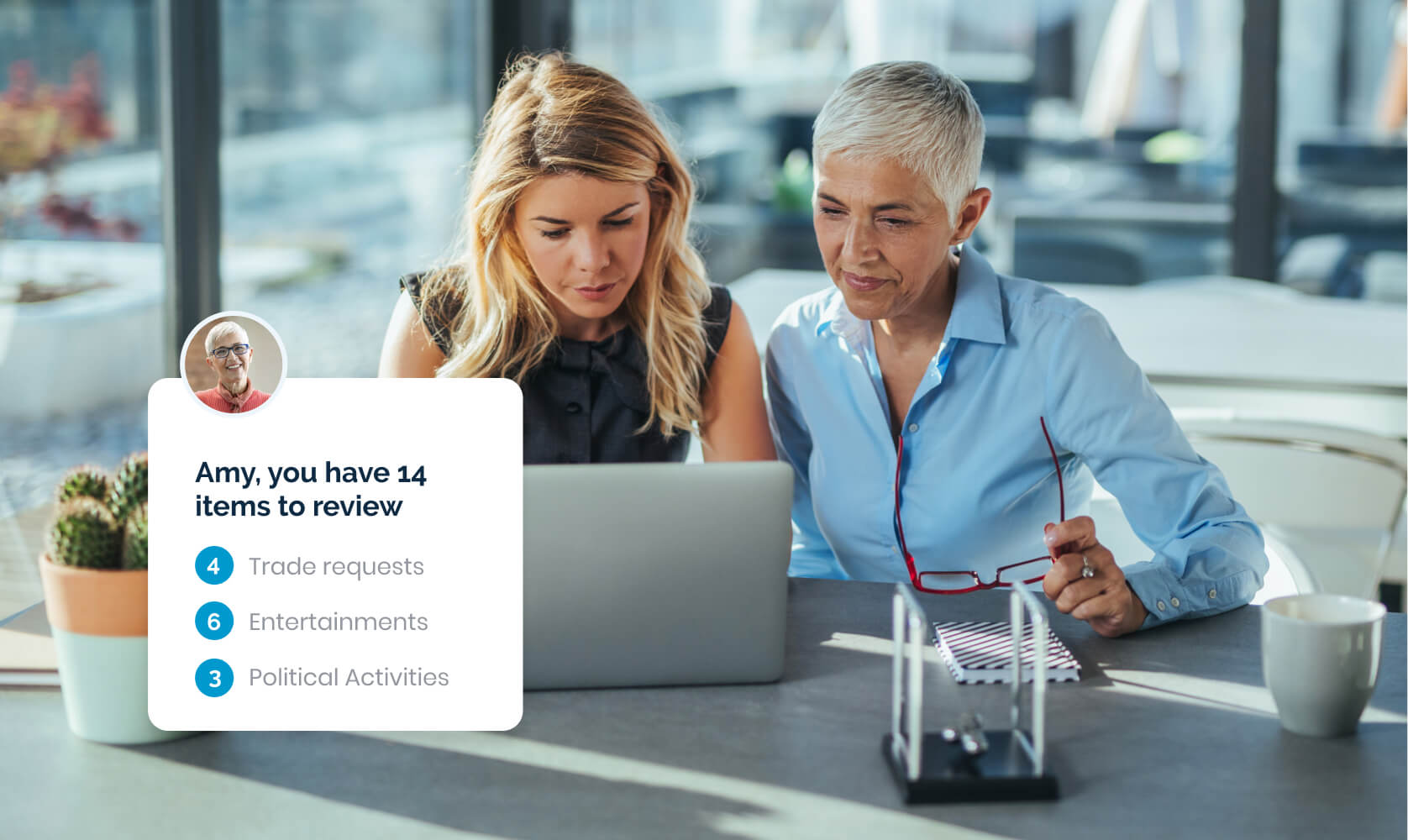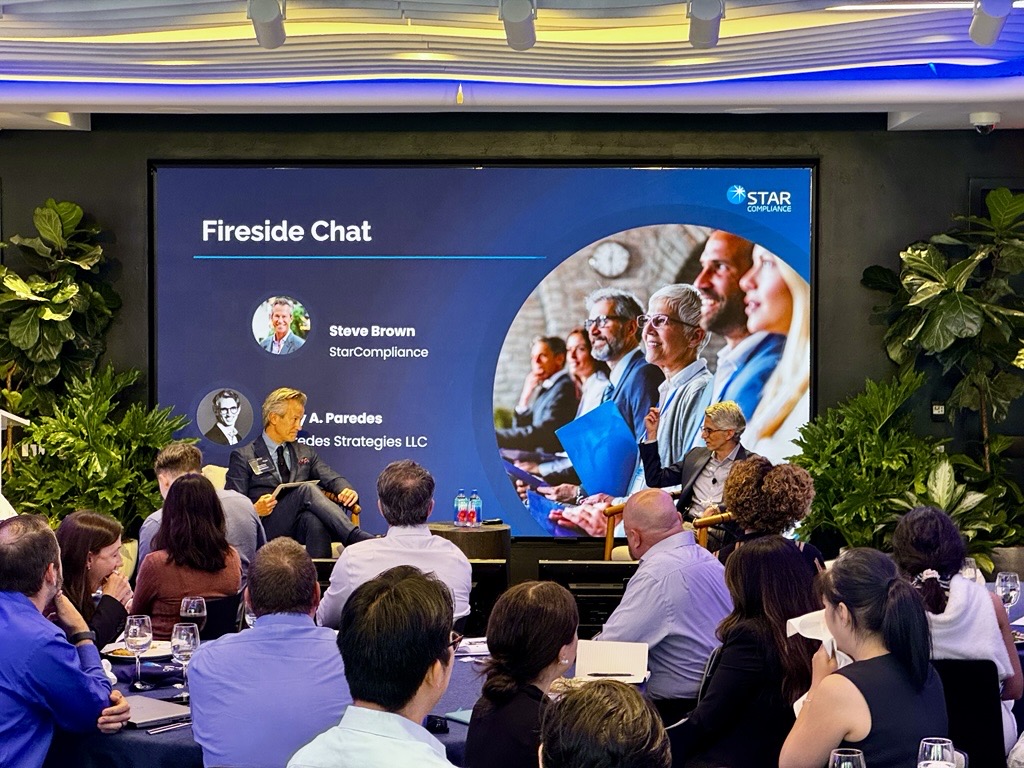New Compliance Software: 6 Ways To Help Ensure Complete Adoption
People will resist any task not directly related to their work, but there are ways around this natural inclination
When it comes to learning something new for a job, resistance is natural, particularly if it’s something not directly related to the work a person gets paid for. This can be the case with compliance software. Whether it’s pre-clearing trades, logging gifts and entertainment, or completing a set of certifications, for the non-compliance officer all of the work done in a compliance platform is in addition to an employee’s primary job.
But though resistance may be natural it’s also futile. A company that’s made the considerable investment in compliance software will expect their employees to use it, whether they want to or not. And it will likely fall to the compliance team to make sure this digital tool, acquired to help keep the company on the right side of regulators, is adopted by everyone it’s required of. Here are six ways to help ensure comprehensive adoption of your enterprise financial firm’s new compliance software.
1. INVEST IN GOOD SOFTWARE
The only thing worse than having to do work you don’t want to do in a new app is doing work you don’t want to do in a new app that’s hard to get around in. A system that isn’t user friendly and intuitive.
Because even if you go out of your way to ensure employees get thorough training on the new platform, enough participants will switch off during that training and inevitably find themselves staring at a screen, desperately trying to figure out how to get pre-clearance on a trade or complete a cert. It’s at this point that a user-friendly, intuitive compliance platform makes its worth known.
An employee that can get past the above-mentioned kind of sticking point, and successfully complete his or her required task without reaching out to you for help or abandoning ship in frustration, is an employee that’s more likely to return to the app and do what’s required of them voluntarily, without being repeatedly asked.
2. KEEP TRAINING TARGETED AND SHORT
It’s understood, then, that you’re going to have some employee tune-outs or even outright naps during your compliance platform training. These sessions can be devised, however, to eliminate or at least the lessen the frequency of such situations.
Do your best to make training as relatable as possible to the people who are going to be using the new app. Try to connect the training directly to their jobs, even though compliance tasks are more often than not going to take them out of their professional remits. Use real-life scenarios as much as possible. Demonstrate the features they’re most likely to use, and show them how the new app—likely more efficient and user friendly, if you’ve sourced it right—will help them get their compliance tasks completed more quickly and easily than the old app.
Making the training relatable also implies making the training targeted. That is, rather than holding massive group sessions, where employees will be forced to sit through feature demonstrations irrelevant to them, train in small groups with employees who will be using the same features. And however you run your training sessions, keep them brief. Better to dole out new knowledge in easily digestible chunks. Dealing with limited attention spans is a fact of life for teachers and trainers. Recognize and accept this upfront and incorporate it into your training thinking from the start.
3. GET HARDCORE BUY-IN FIRST
Consider rolling out the new compliance platform in stages, building support and buy-in group by group. Start small. Getting “points on the board” quickly will build momentum moving forward.
The first stage of deployment could be to a small group of reliable firm stalwarts. They might be known early adopters, the type who love to dig into anything shiny and new. They could be those employees struggling the most with the old system, those most in need of a solution. They could be employees with the simplest needs, and therefore the easiest group to get up and running on the new platform. These early winners will help set the tone for the rest of the organization.
And if any exceptionally hard-charging app-champions evolve out of this process, take advantage of your good fortune. Employ these natural-born zealots as platform ambassadors. They could be your informal go-to experts for other employees as the software continues to be rolled out to a wider audience. A targeted early rollout will also help you refine your training technique moving forward. Think of this stage as your test bed.
4. GET LEADERSHIP BUY-IN ASAP
One might presume that if an enterprise financial firm went to all the trouble of vetting compliance vendors and splashing out serious money for a new platform, that leadership buy-in would be a given. Not necessarily. Just because compliance got the sign-off on new software doesn’t mean leadership is 100% behind it, or even has a firm grasp on why it was purchased.
As such, you may need to press your case for whole-hearted platform adoption in both directions of the company hierarchy: up as well as down. Training sessions may have to be scheduled with firm leadership as well as with the firm’s frontline troops. And leadership won’t necessarily be any more ready to drop whatever it is it’s doing to engage the new software than the rank and file. Everyone is busy.
But the troops need to know that leadership is fully behind the new compliance software. Consider having your c-suite attend general training and learn the new software shoulder to shoulder along with everyone else. What better way to demonstrate leadership buy-in? Of course, it’s optimal to have leadership buy-in from the start. To have them involved in the selection process. That will certainly make wider buy-in far easier.
5. GET HELP FROM MARKETING
What can they do, you might ask? Well, marketing is all about messaging. Getting the word out. Building excitement around the launch of a new product. Marketing can help you get buy-in for your new compliance platform at every level of the organization.
A classic tactic is to start early. To get the word out on a new product in advance. Think of a movie trailer. A film studio builds excitement far in advance of the actual release of the film, especially if it’s a major release. Depending on the sophistication of your particular marketing department, there’s nothing that says a trailer couldn’t be put together for your new compliance app. It will get people used to the idea, if nothing else.
If a promotional video seems a stretch, there are other, less ambitious options to consider. Flyers posted up on bulletin boards can still do the trick. Messages broadcast on an in-house television system can help get the word out. The most important thing is to understand that the concept has value. Your marketing department will come up with the proper strategies, tactics, and materials if given the opportunity. It’s what they do.
6. THINK OF TRAINING AS ONGOING
It’s traditional to think of training as having a defined beginning and end. You attend a training session and that’s it. Maybe when the next official version of the software is released there might be more, but otherwise you train once and learn the rest on the job.
Try instead to think of training as ongoing. Many professions operate in this manner. Pilots, for example, once licensed are always licensed, but they need to fly a certain number of hours in a certain period of time to stay “current.” In the world of Project Management Professionals, or PMPs, they too have to put in a certain amount of regular training or study to keep their certificate valid.
Maybe you can’t formalize compliance platform training in quite so rigid a manner, but there’s nothing that says you can’t come back to it on a regular basis. Continual compliance software training will help keep learning manageable for those firm employees who aren’t in the actual compliance part of the business. Resistance may be futile, but tell that to the guy sleeping in the back of the room.
New Compliance Software: 5 Ways To Ensure Adoption

{





